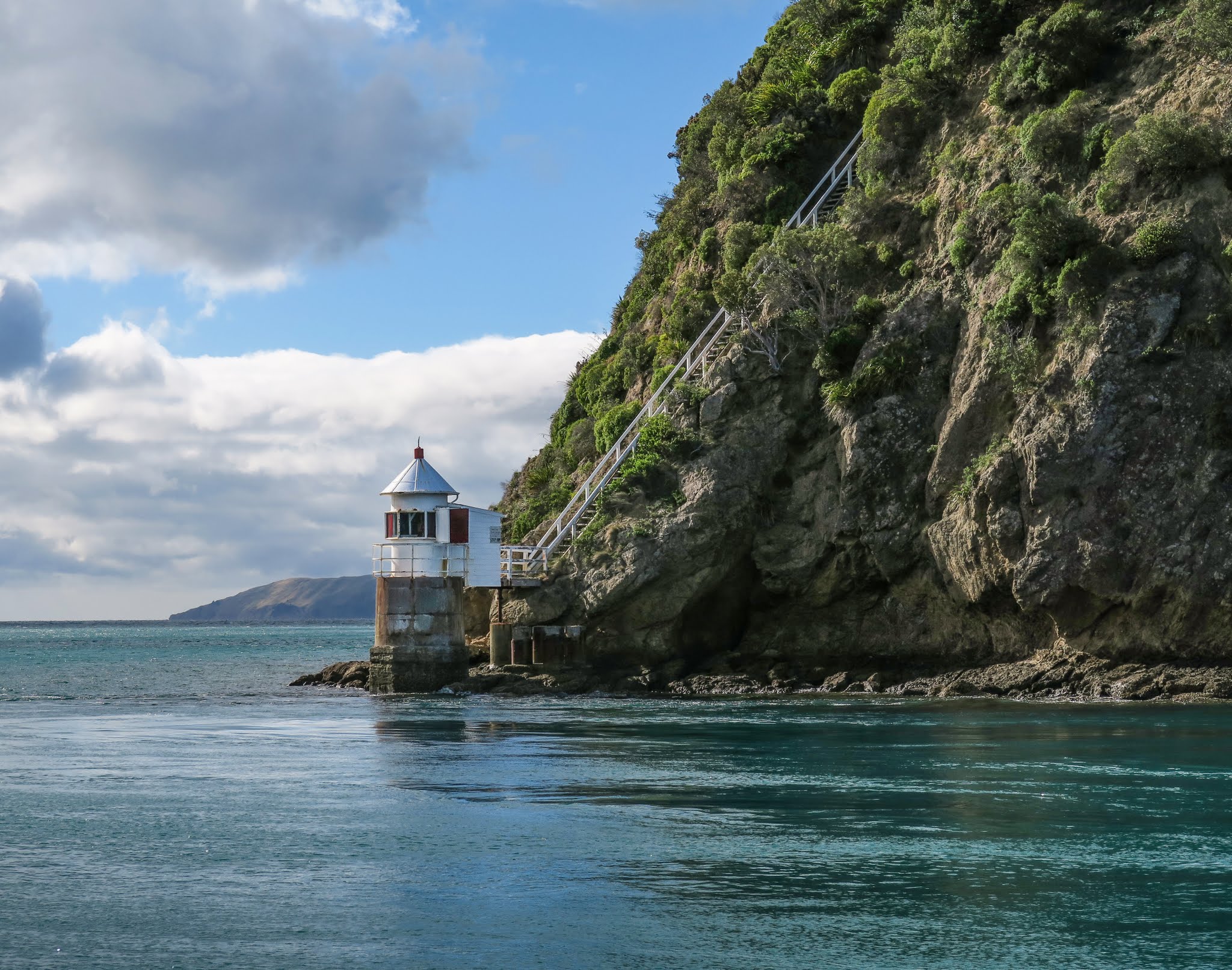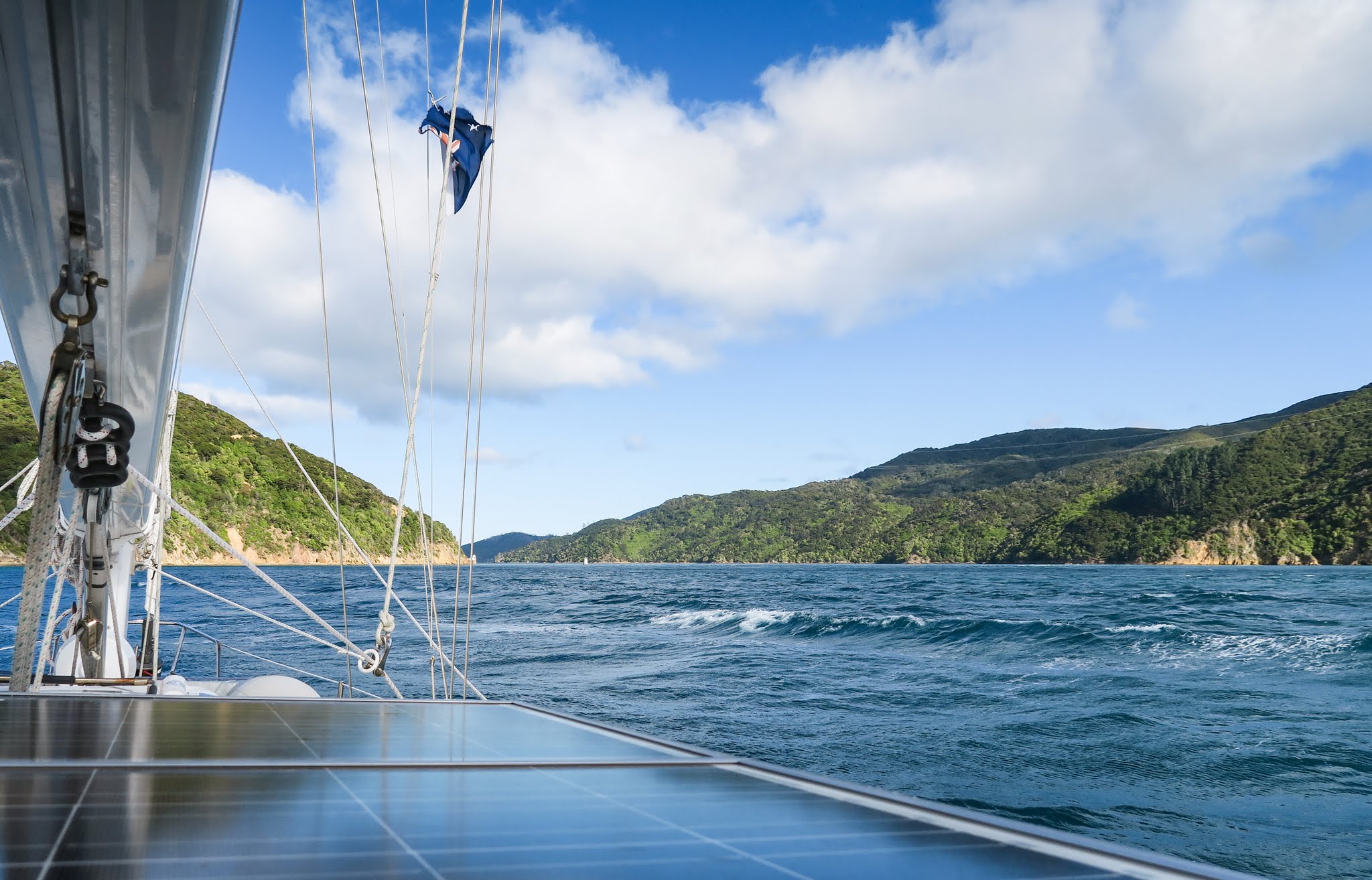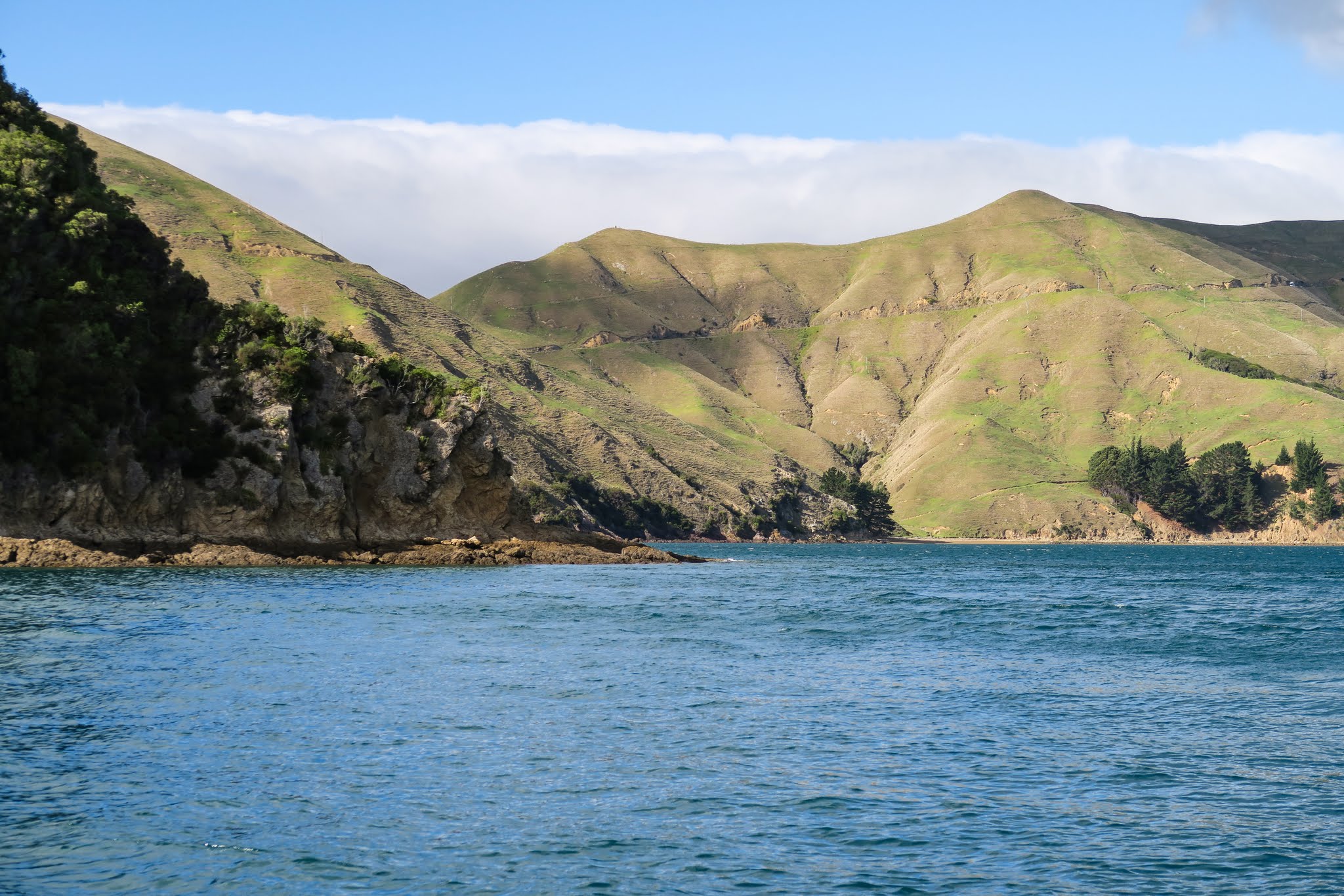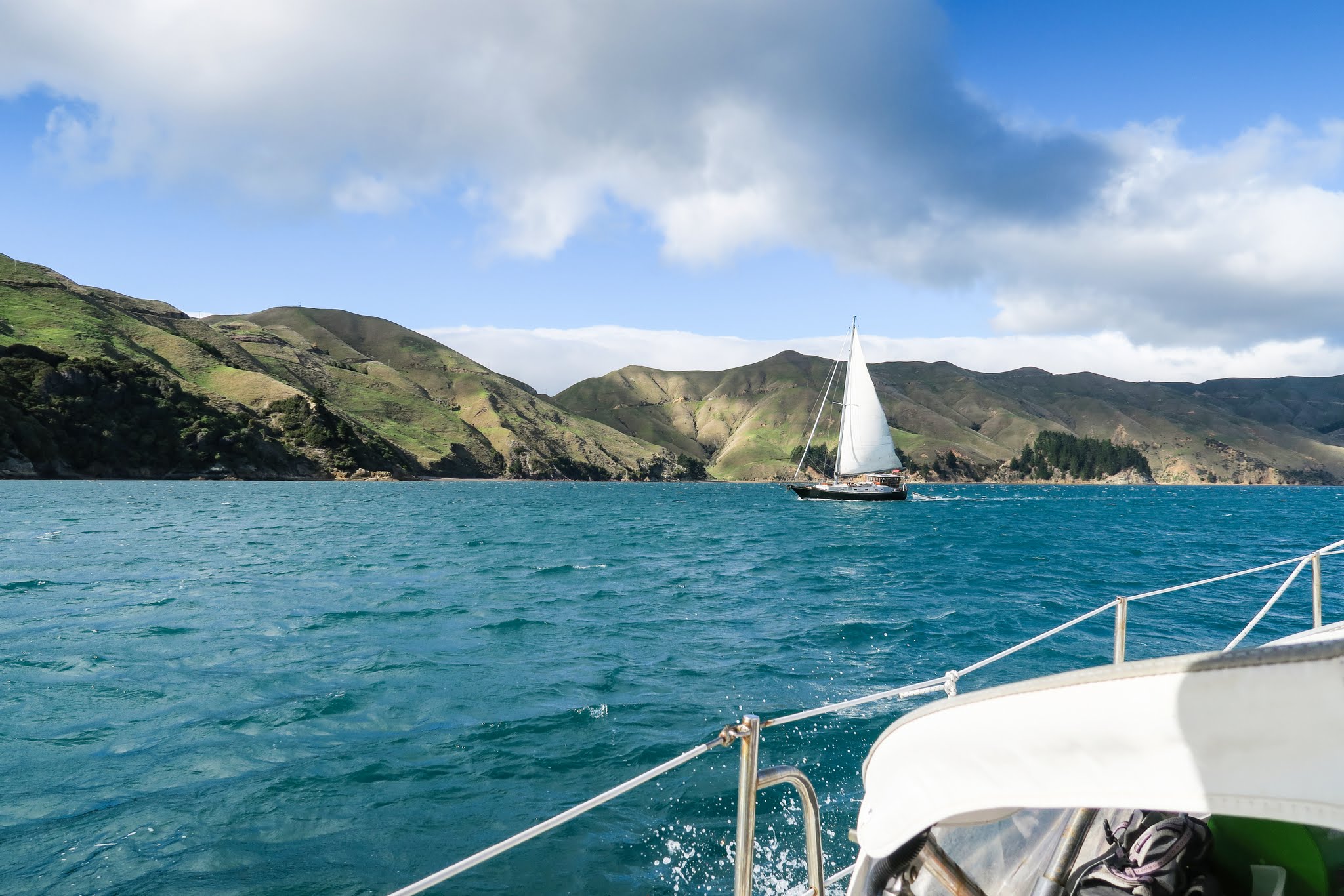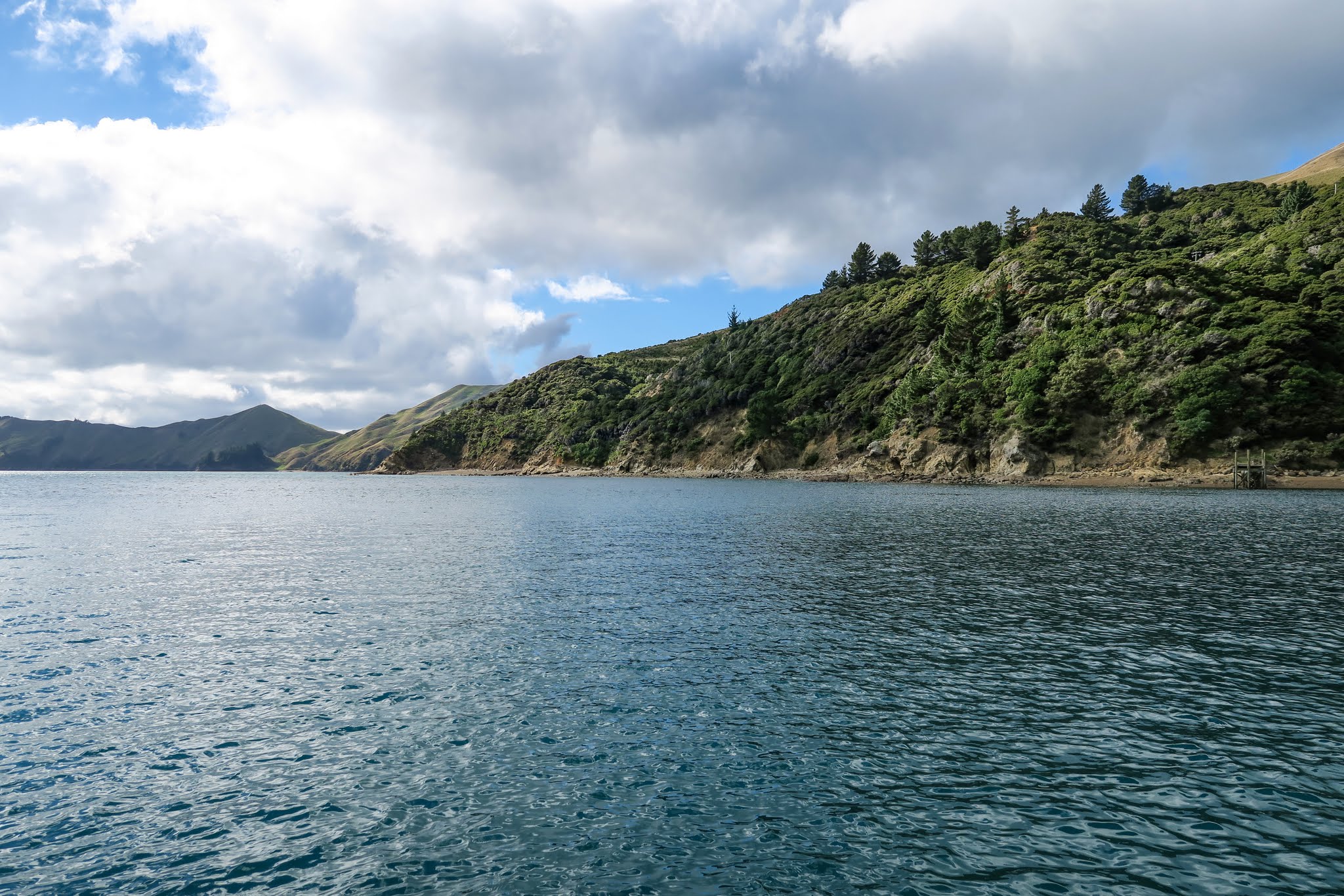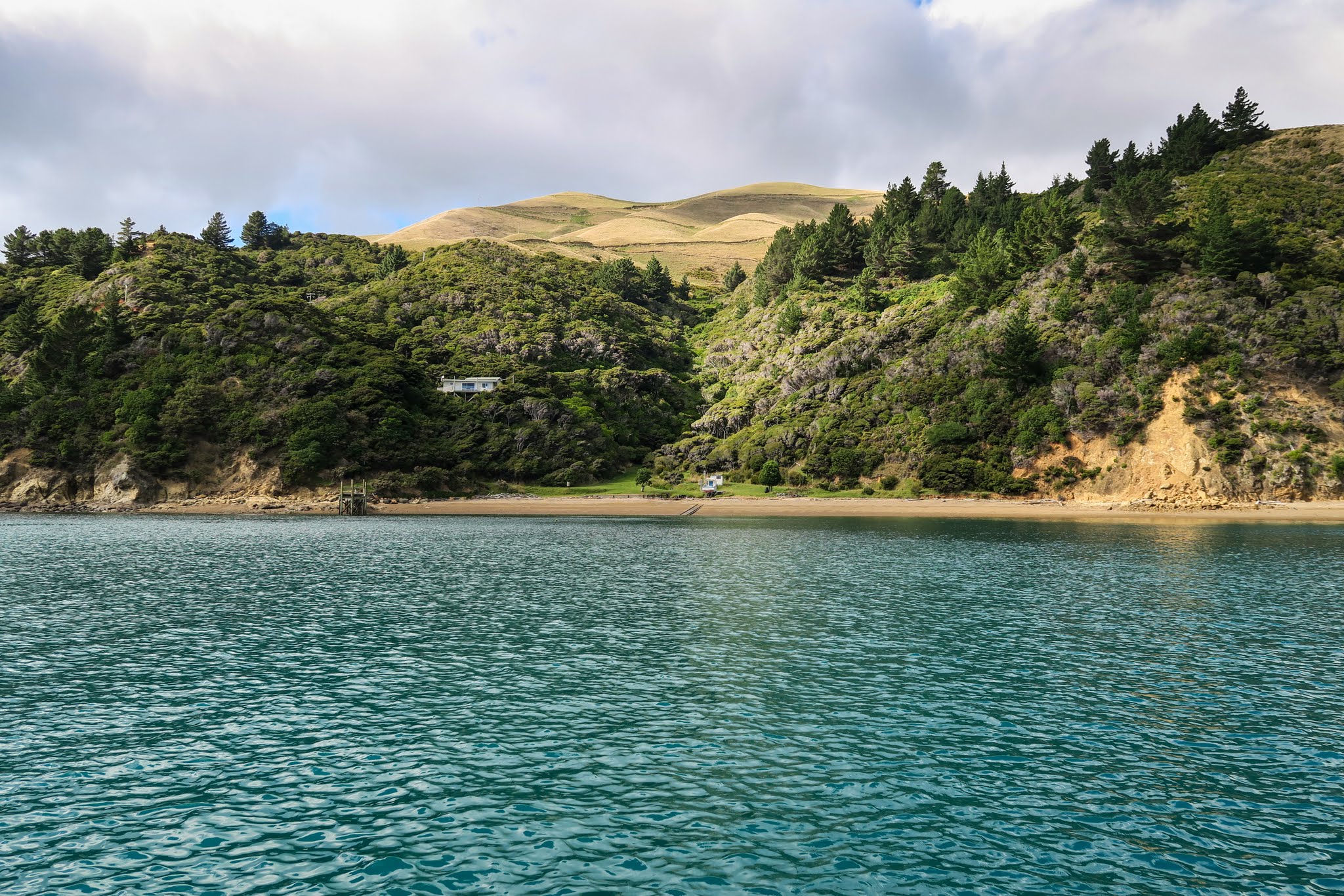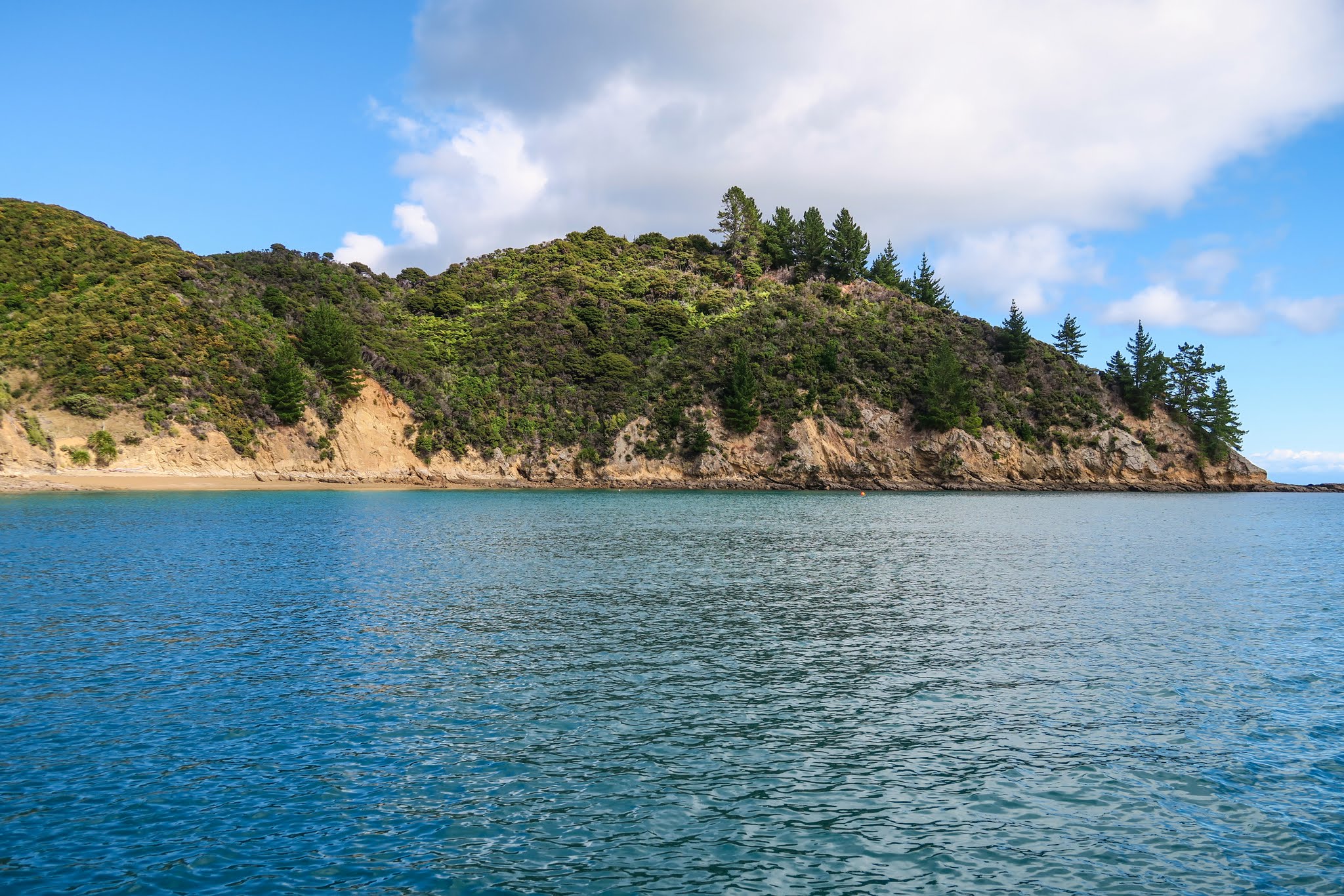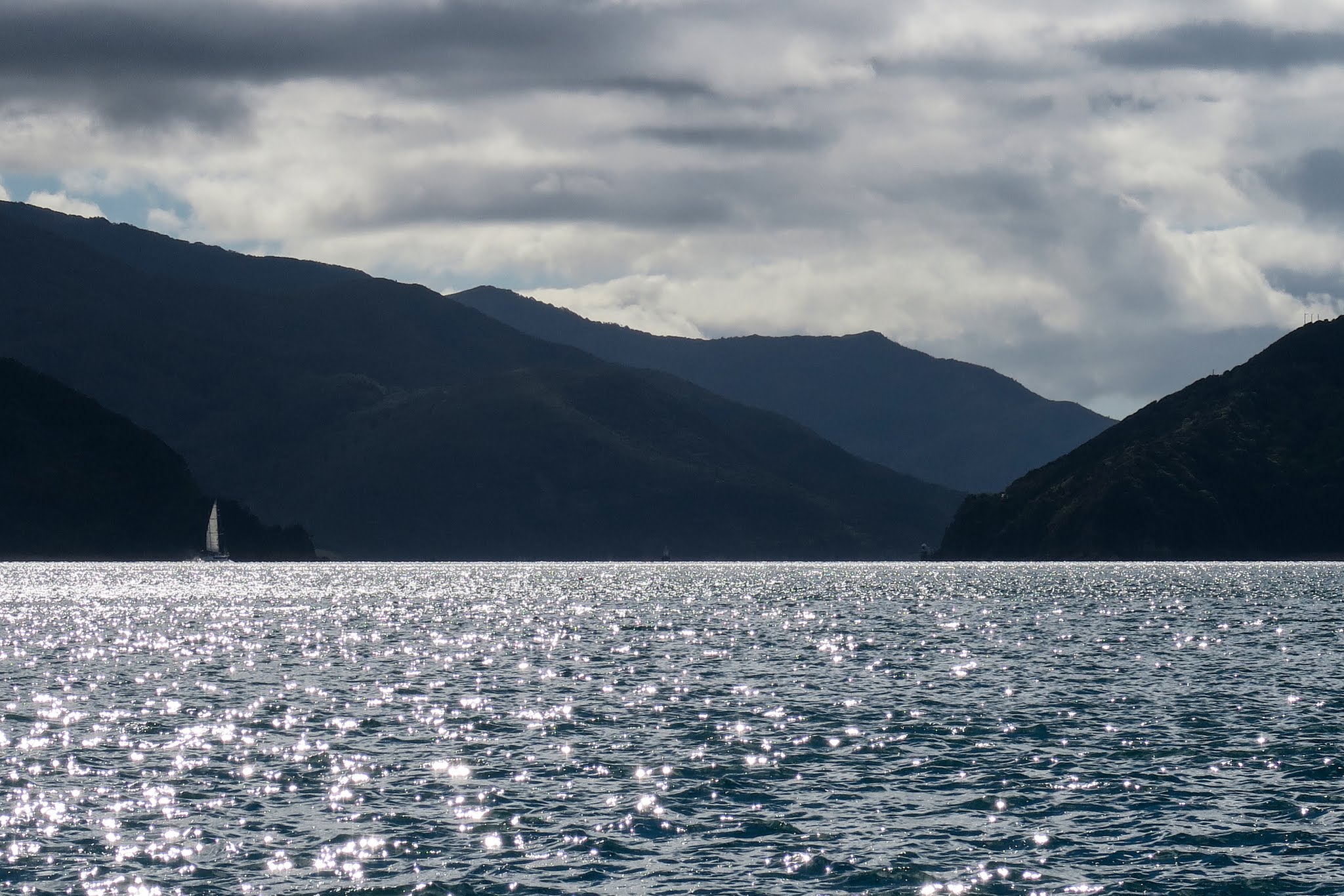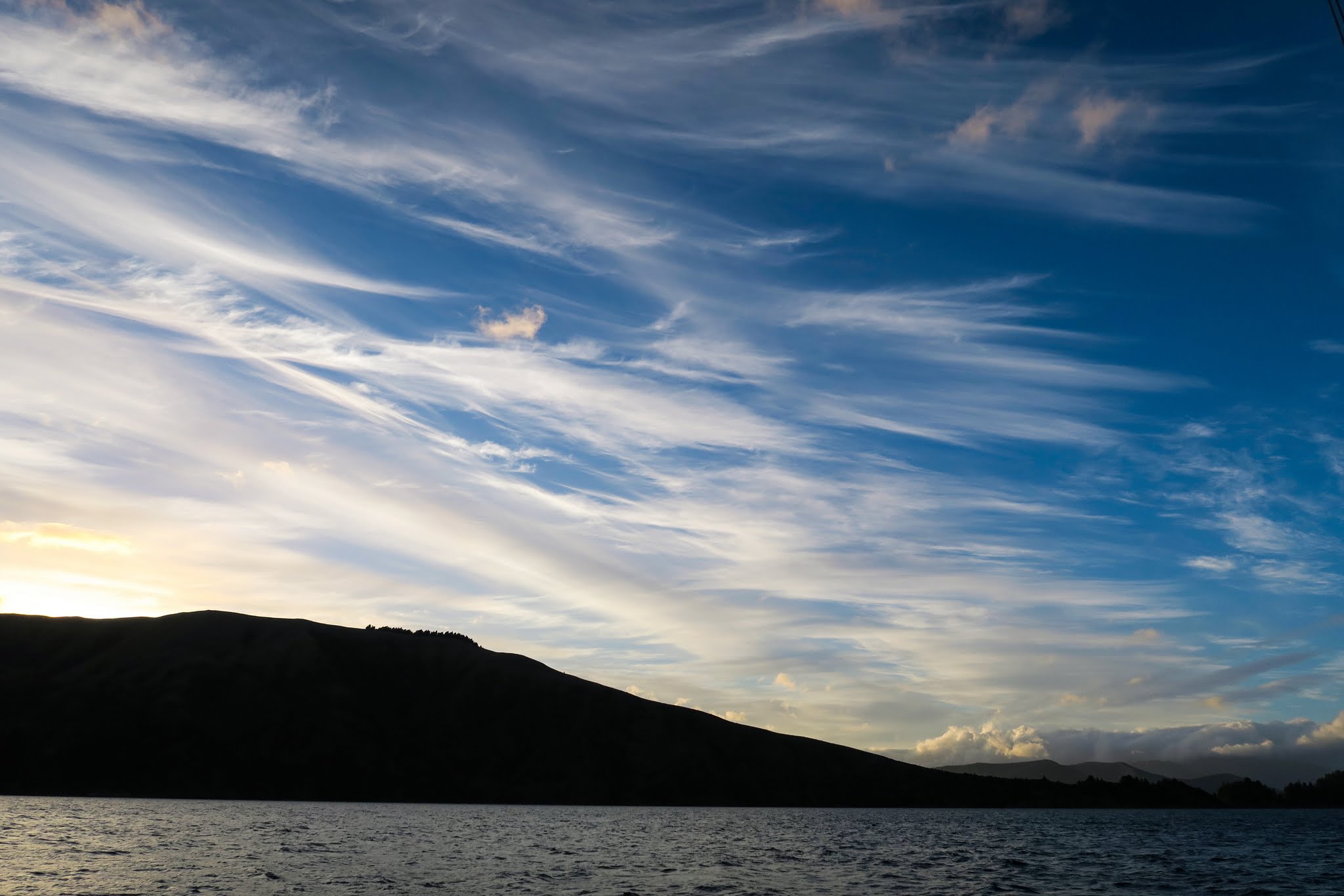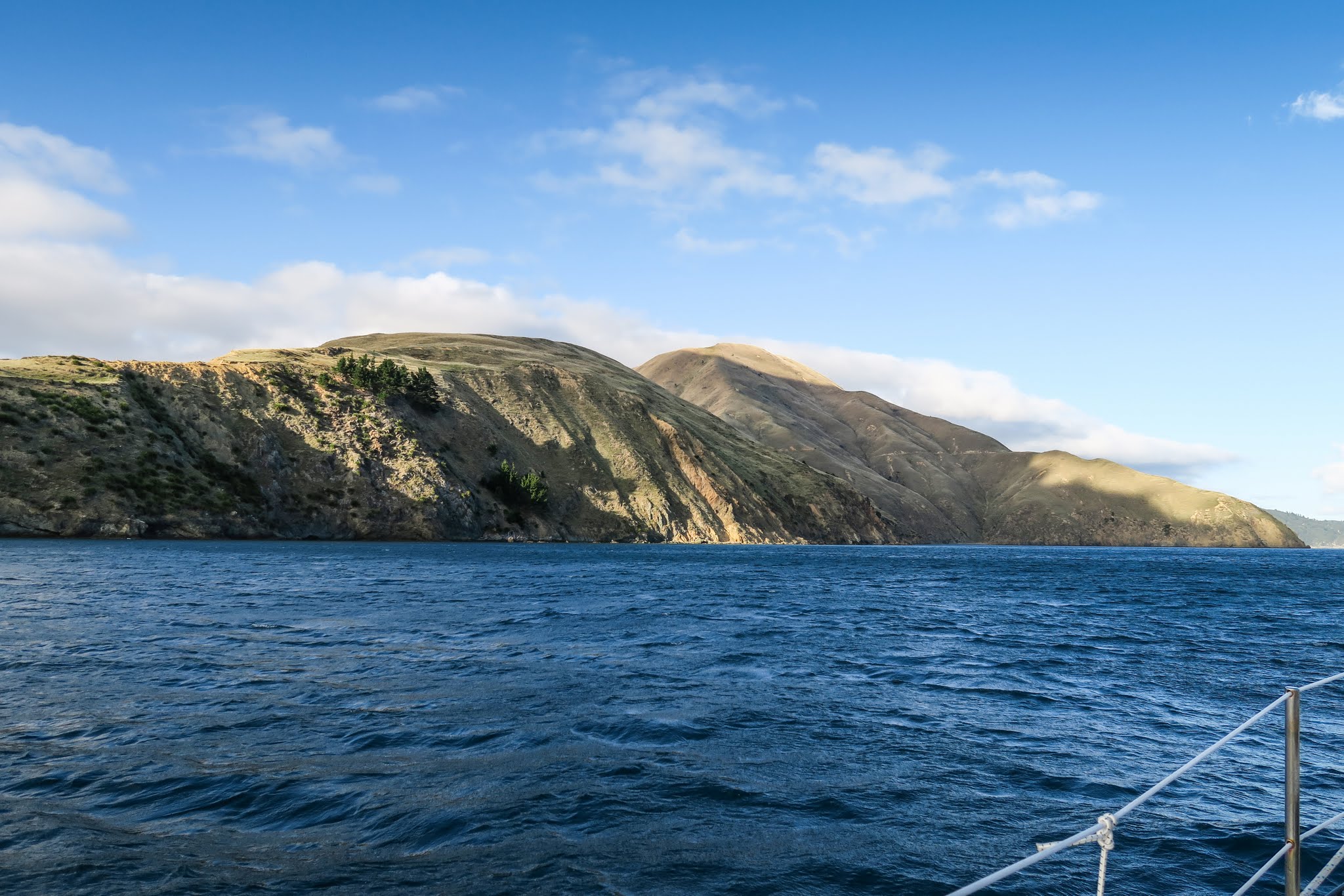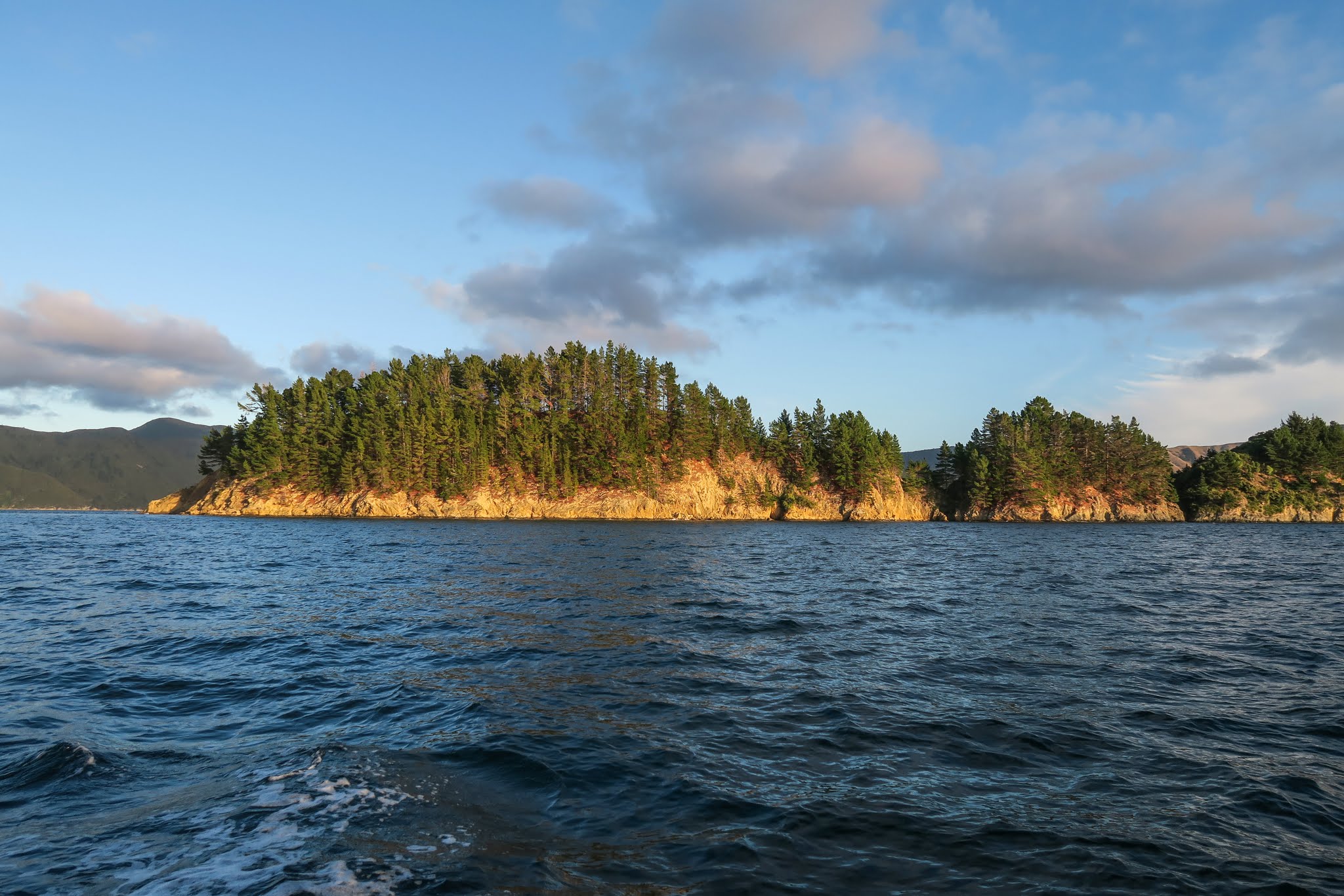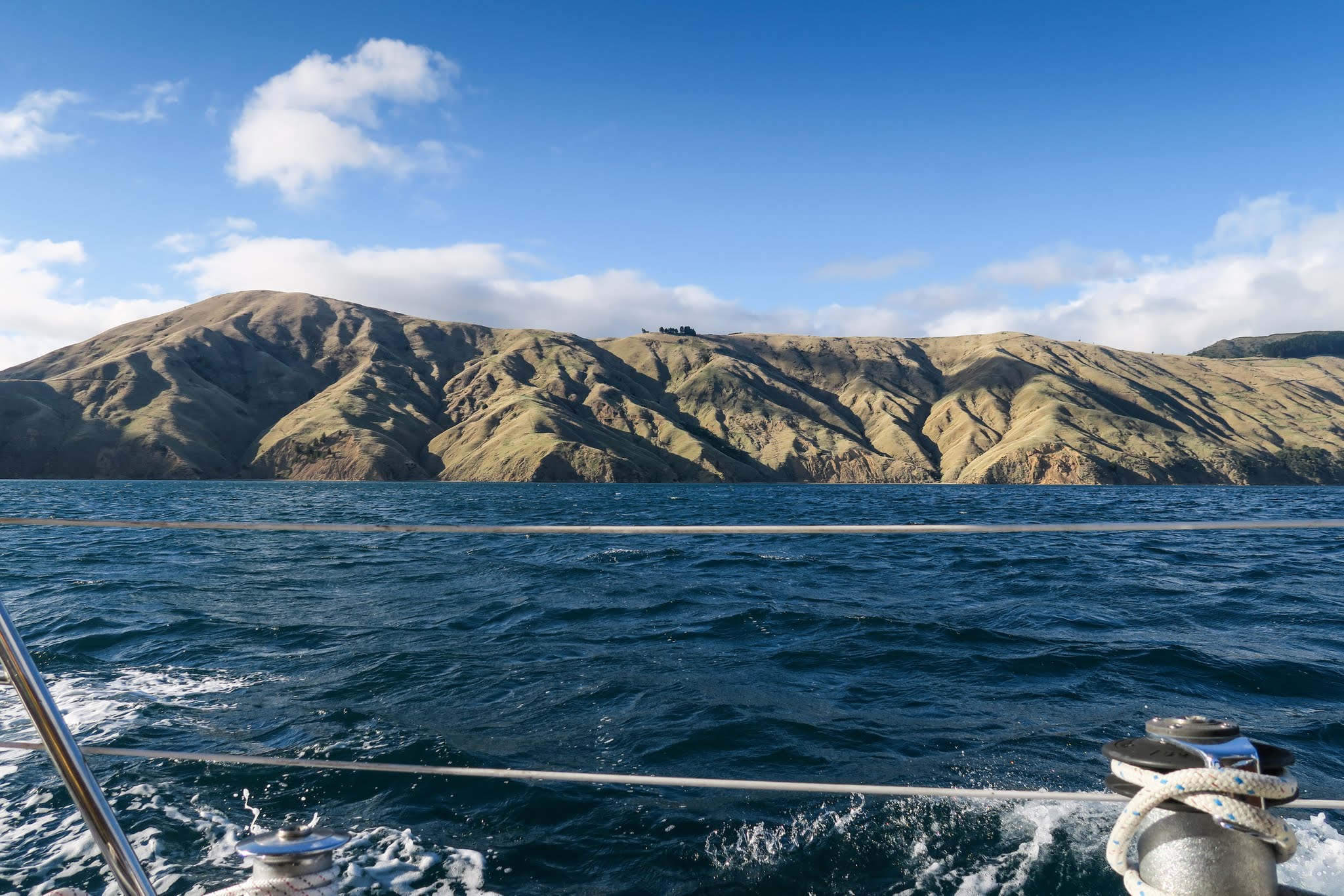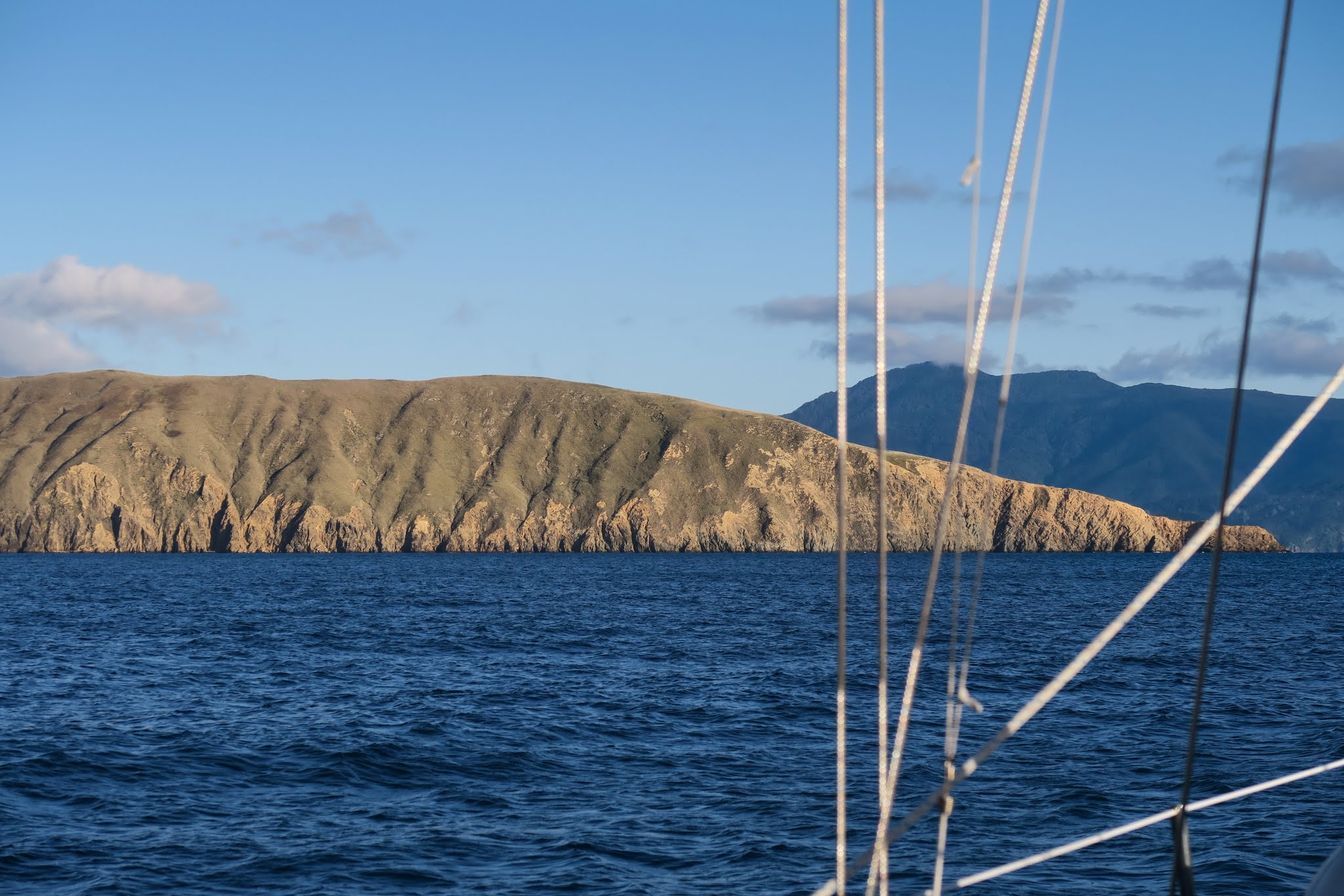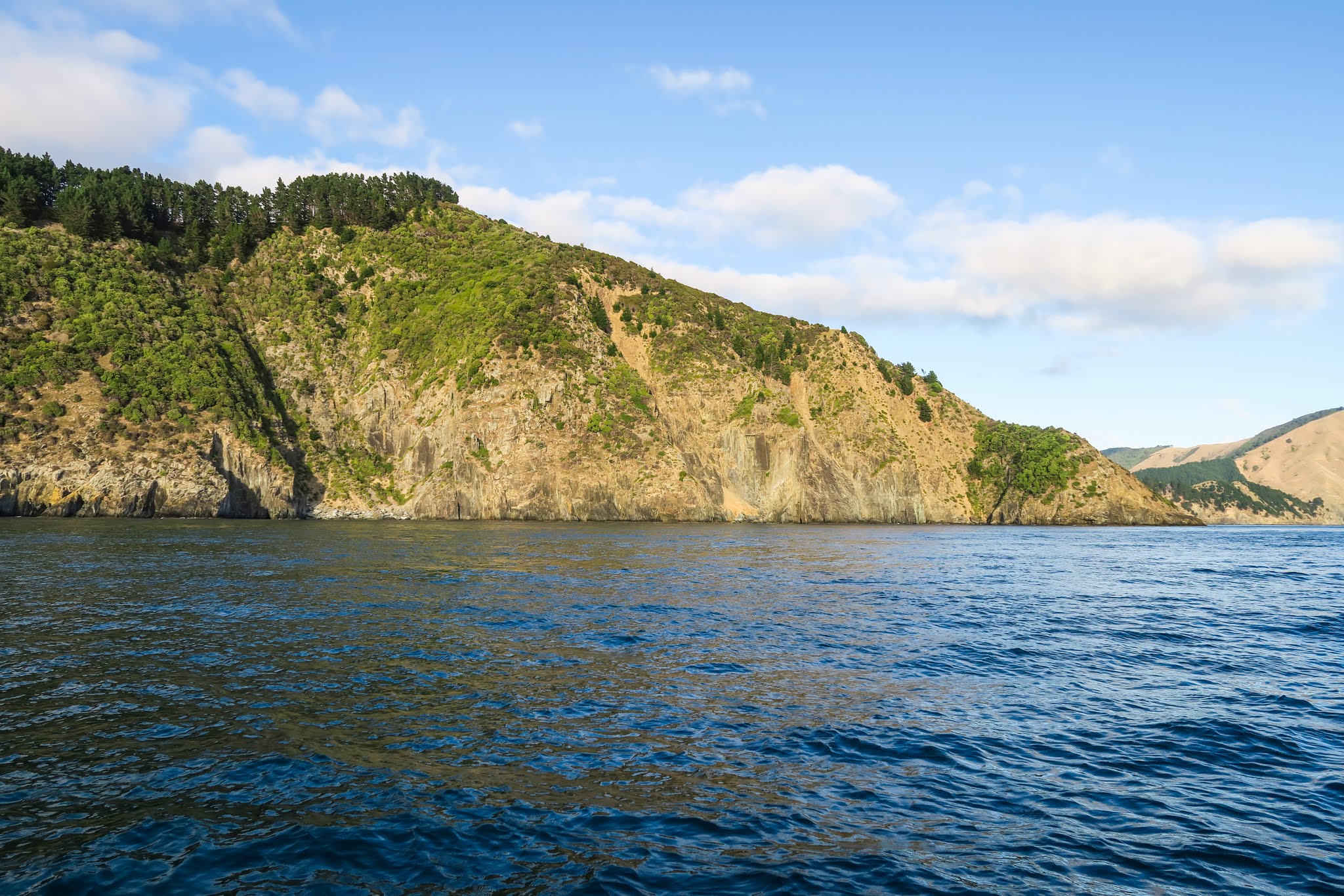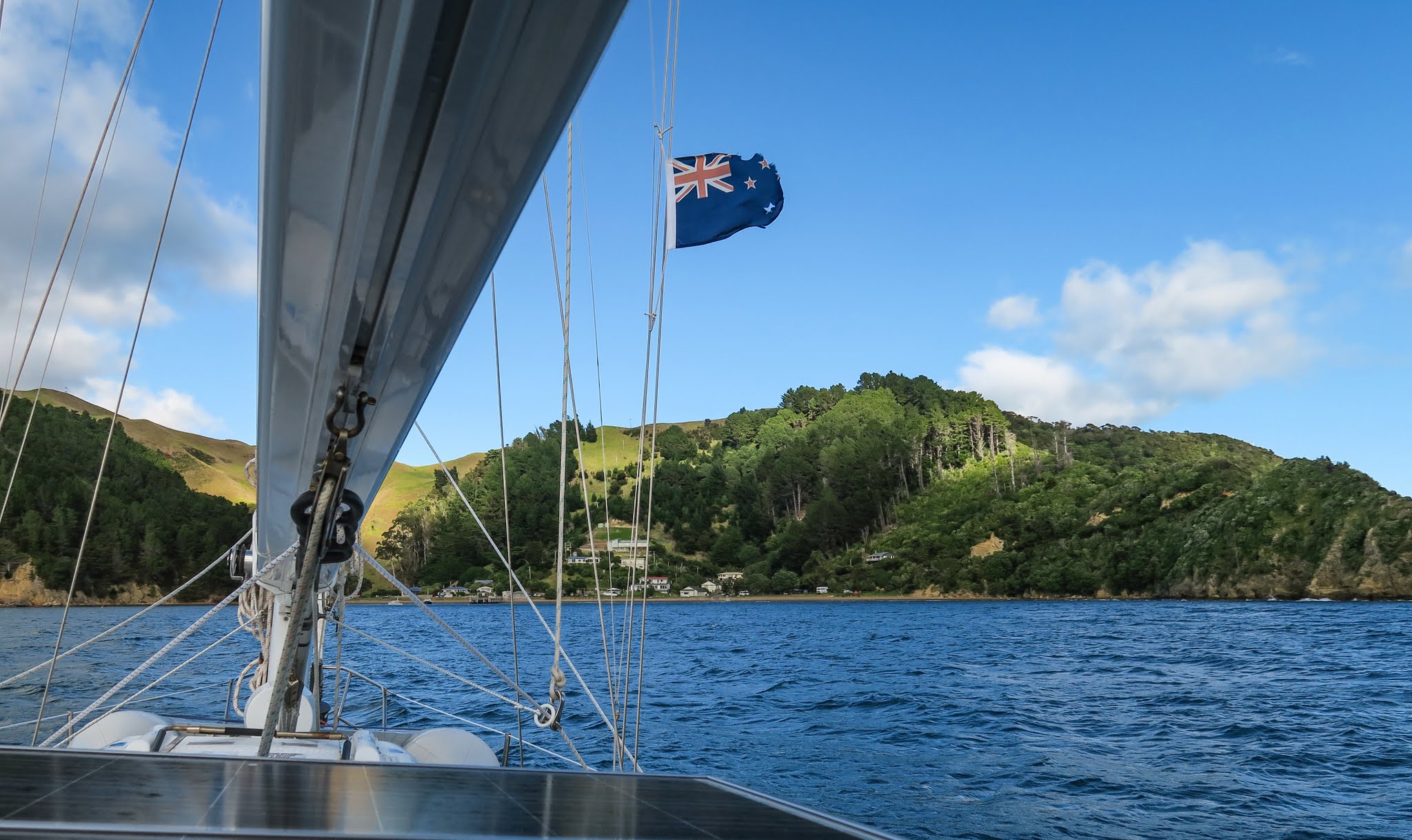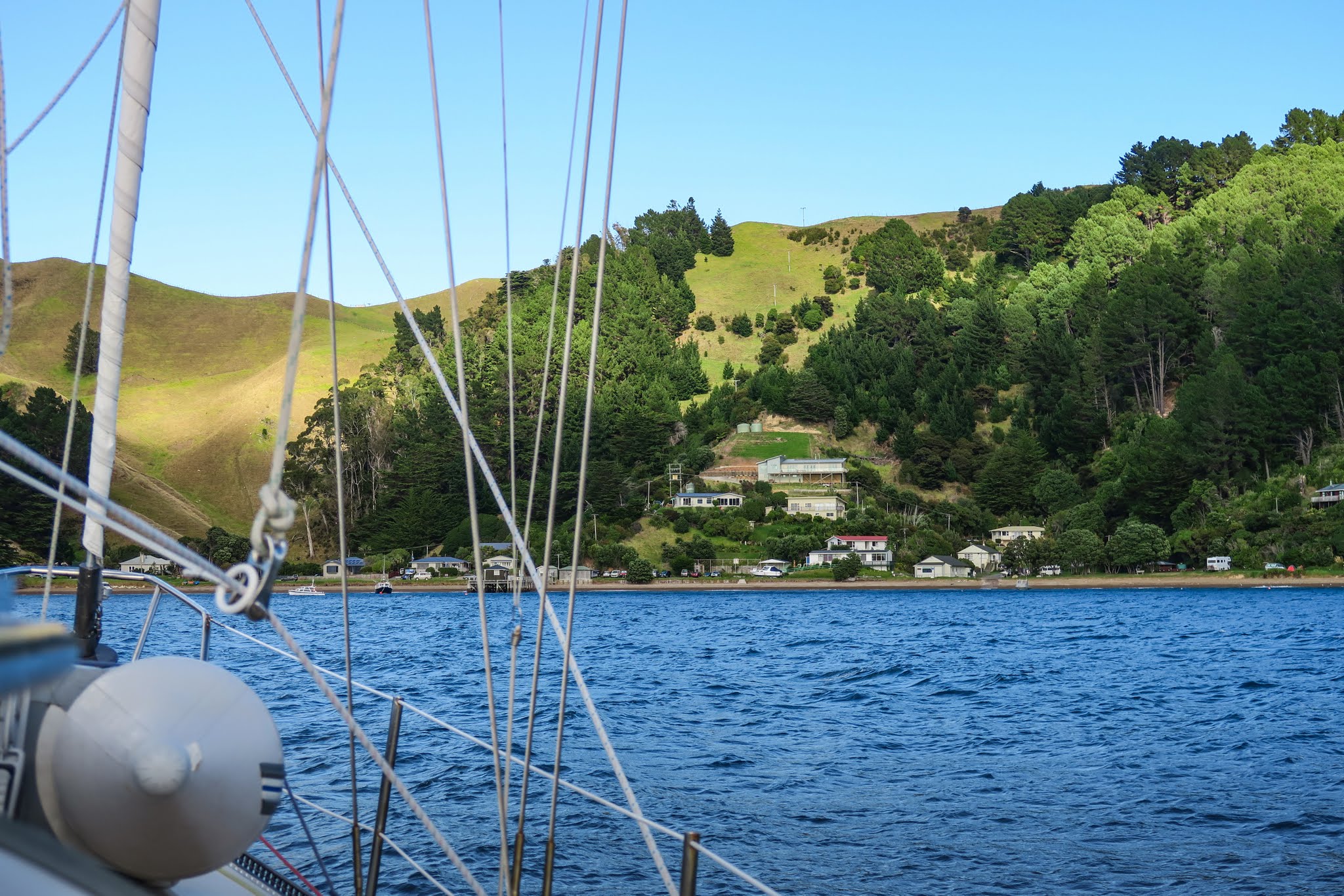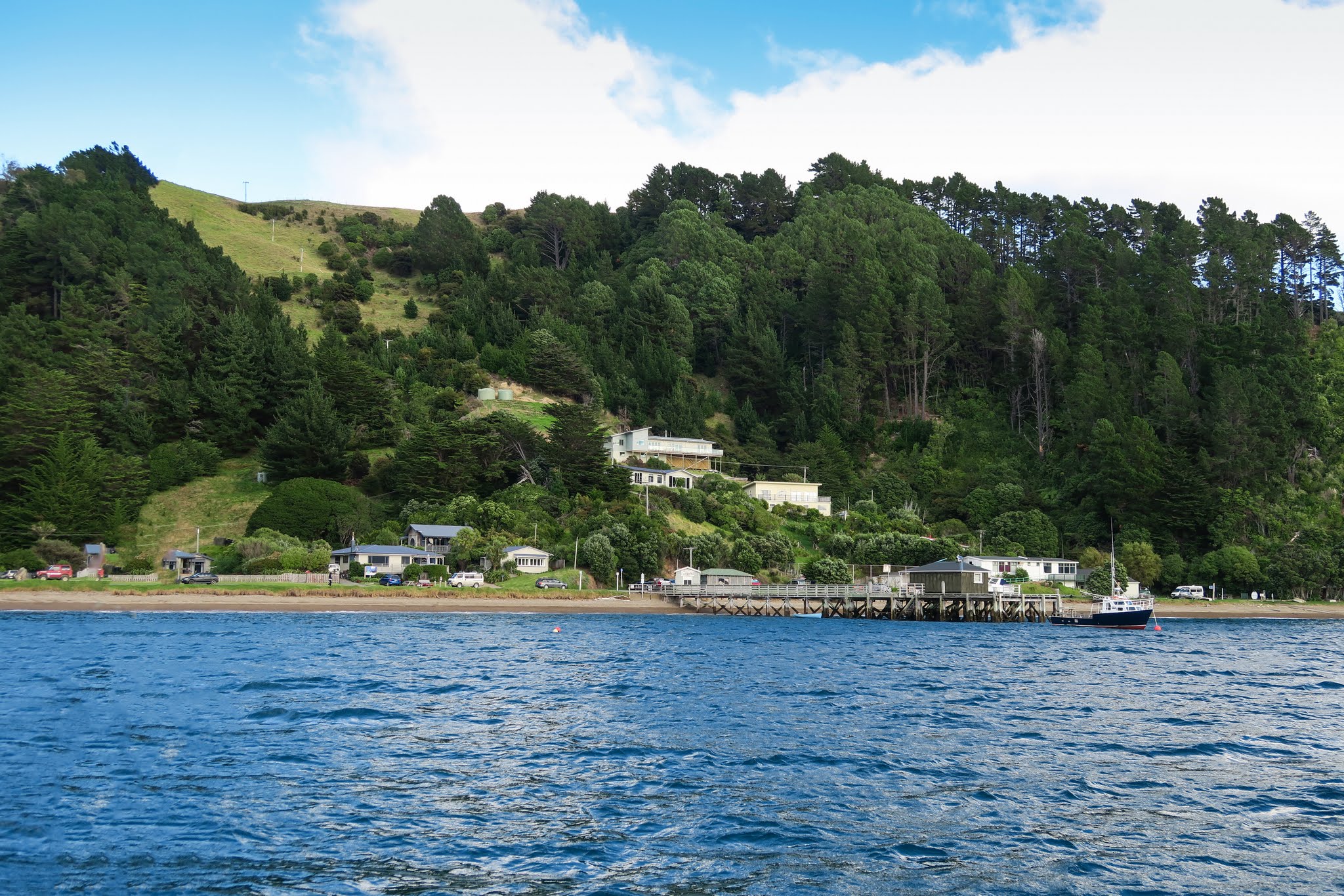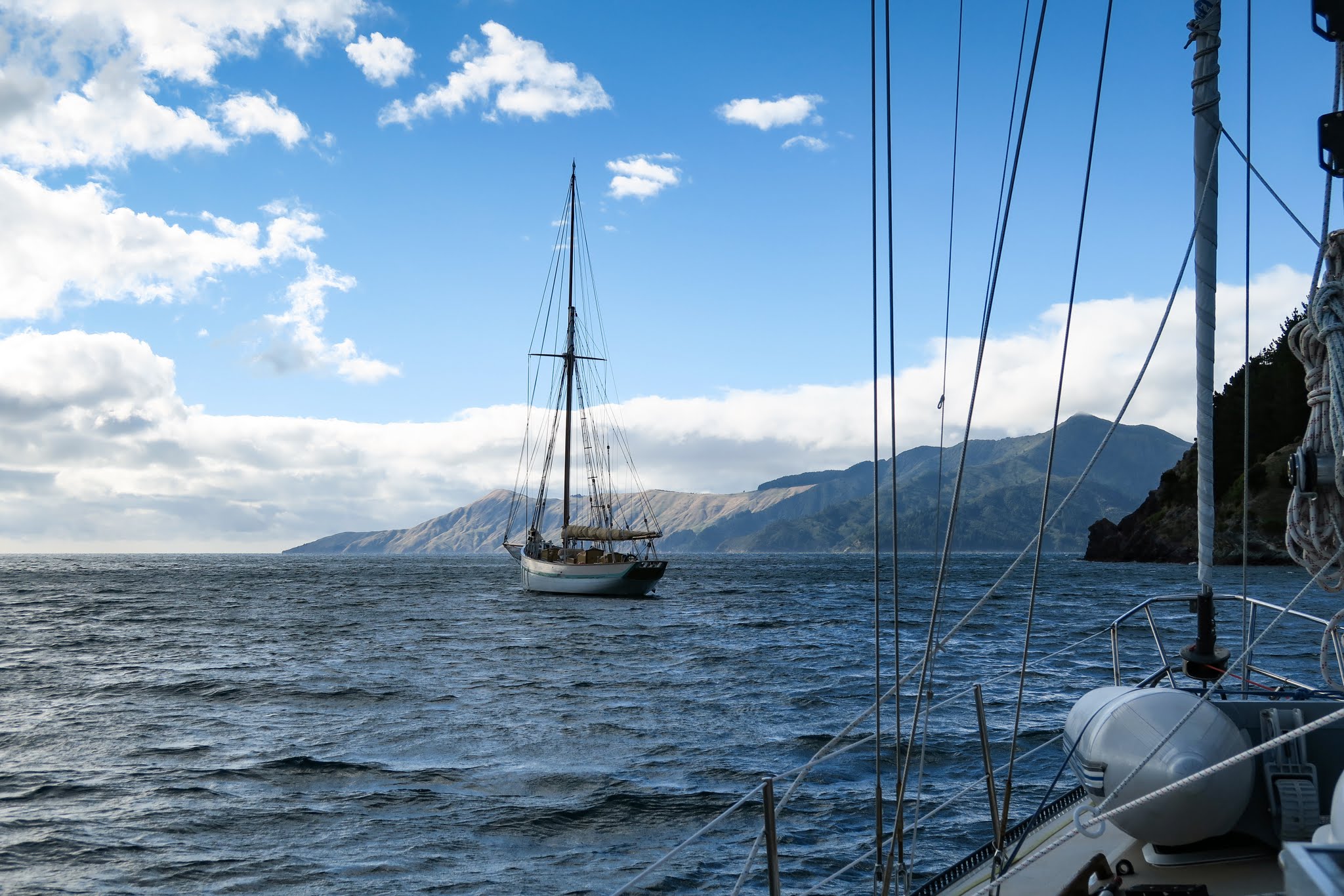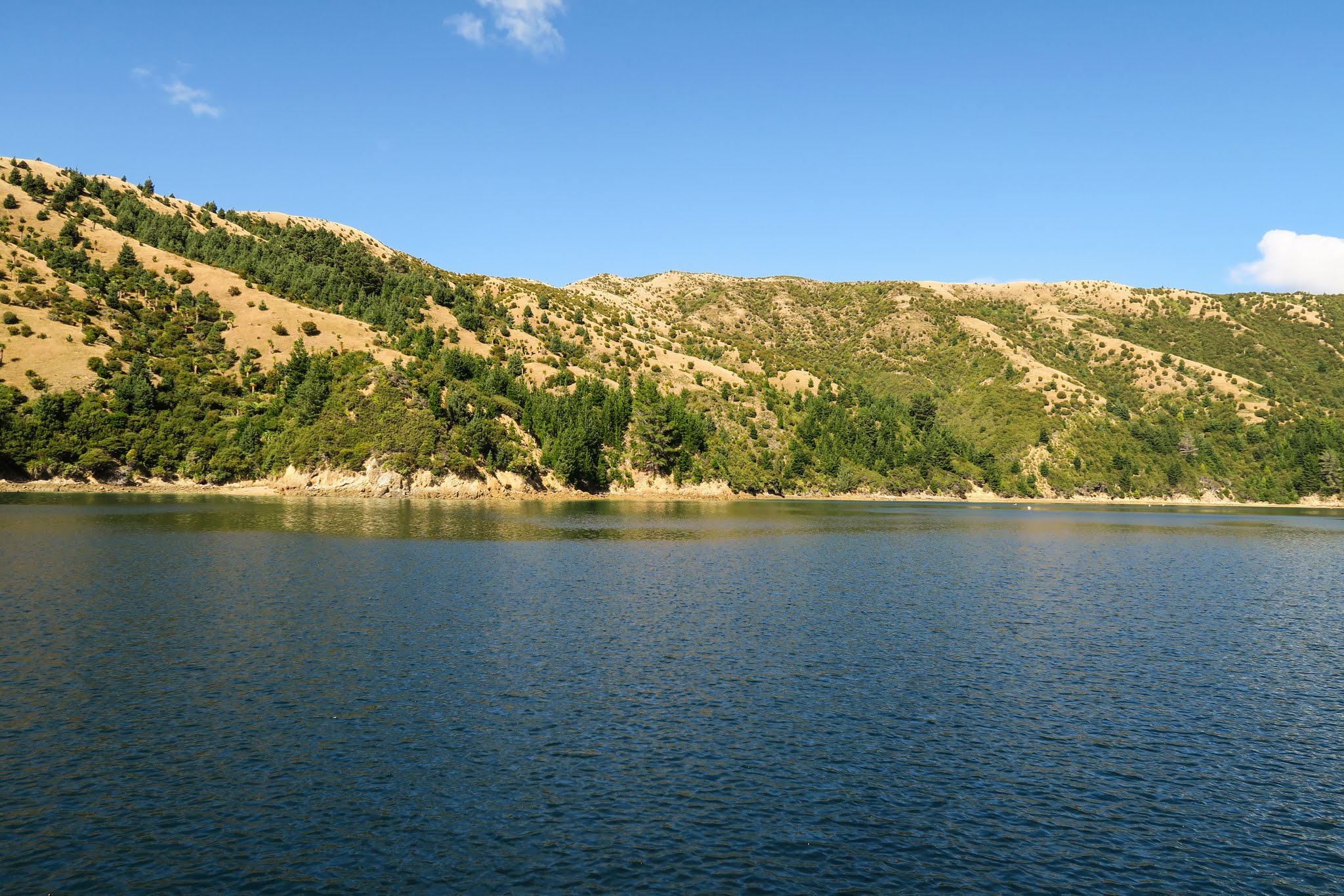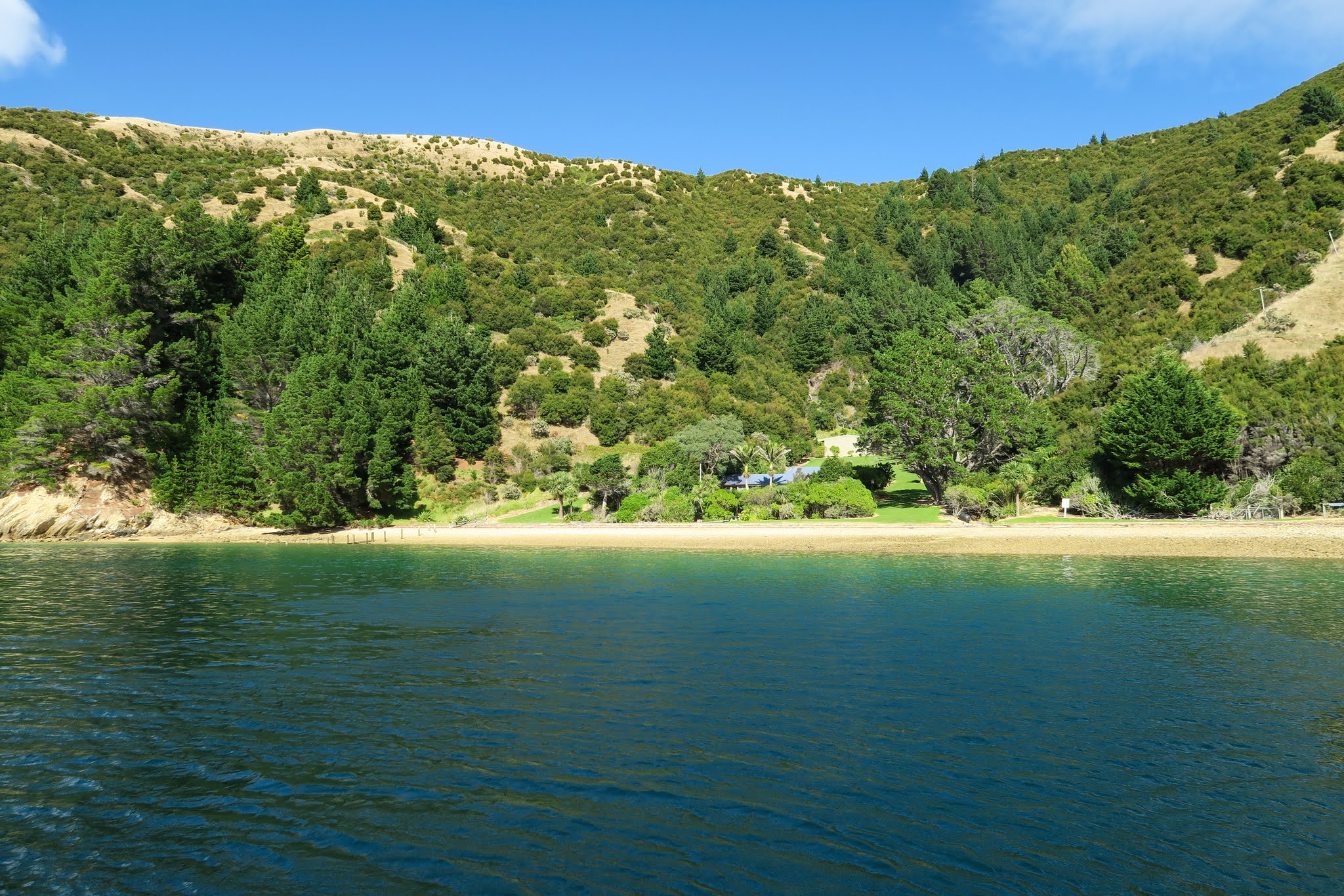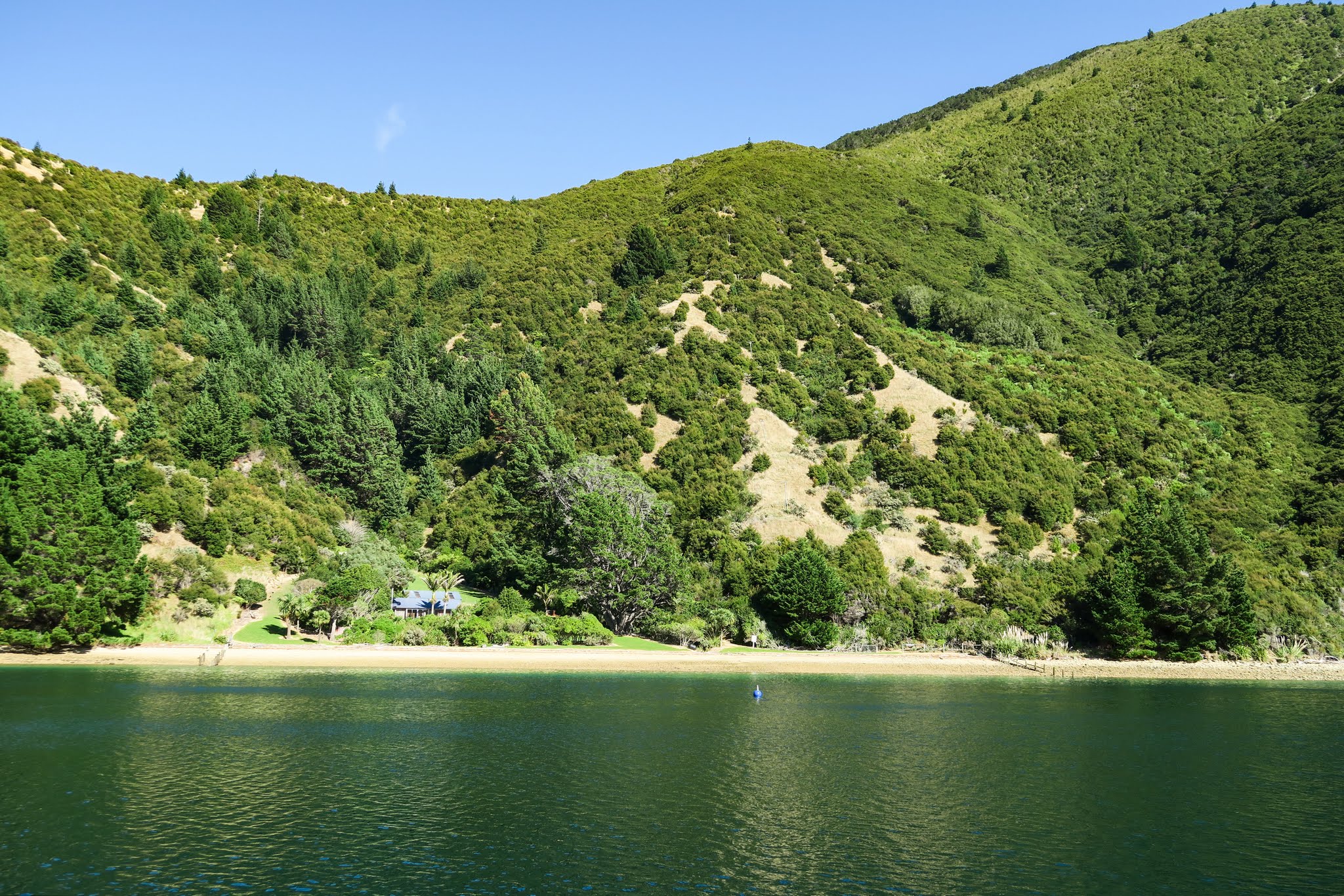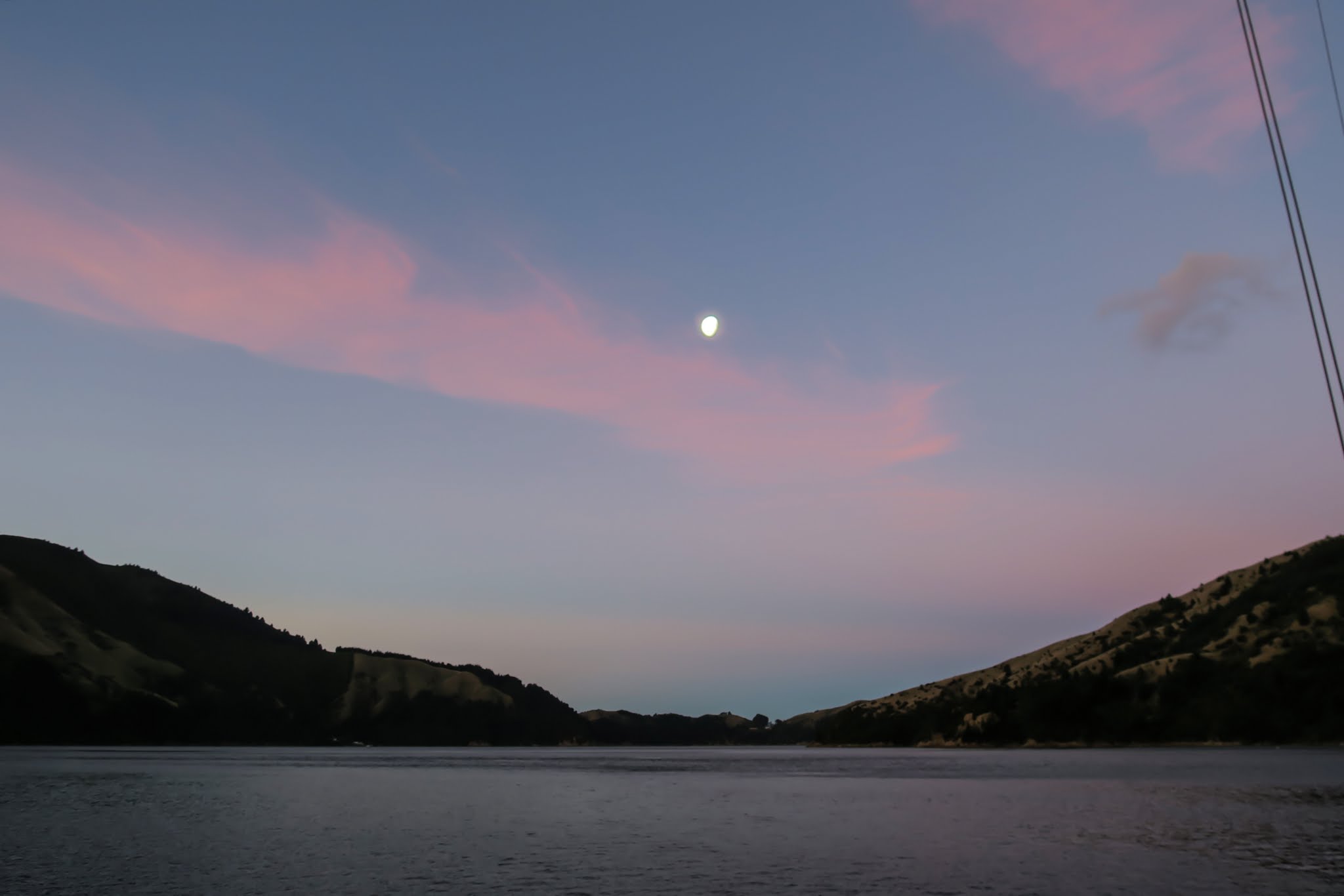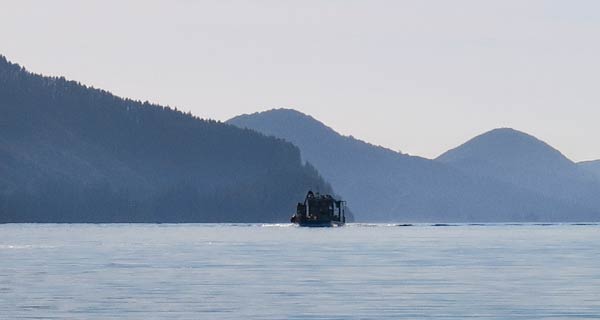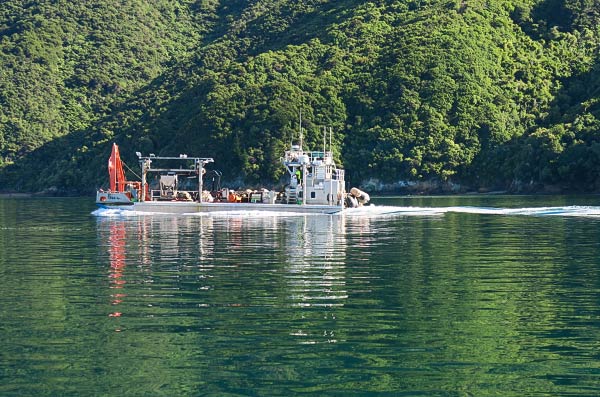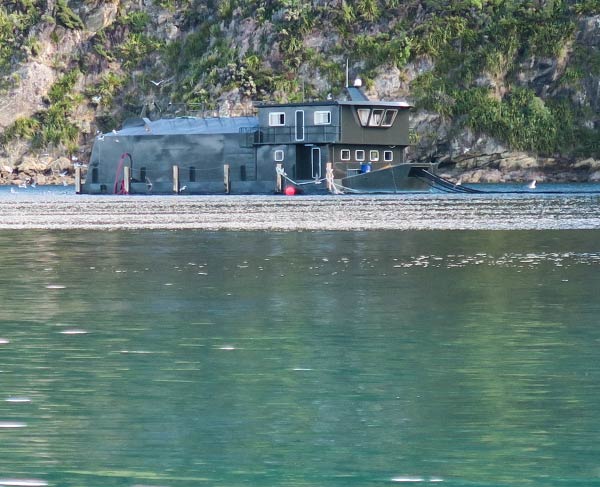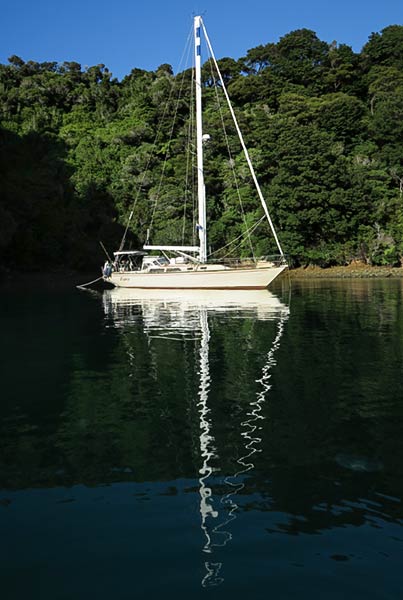April 18, 2016
By the time we dropped the mooring in Elmslie Bay, the wind had dropped to a reasonable 15 knots, so much nicer than 20+! As we approached the pass, the wind continued to drop. It was almost as though nature decided if we had to go through turbulent water, she’d at least give us a break on the wind. Sometimes the fates are kind.
There’s a procedure for going through the French Pass: You must announce 10 minutes beforehand your intention to go through. The channel may look wide, but the area where it’s safe to take a boat is so narrow that only one boat can pass through at a time. We dutifully made our announcement. As we approached the pass, there was still a 3-knot current against us, but we decided to go for it anyway. This is one of those places where we’d probably hit currents no matter how well we timed it.
I stood on the bow as we entered, not sure what to expect but hoping it wouldn’t be too rough or wet to be up there. It wasn’t. The wind dropped even more as we passed through, and I was able to hold on with one hand and take video and photos with the other. As we entered, the water swirled around us and we seemed to go through small rapids. We still had some current against us, but thankfully it was in the same direction as the wind. (If that hadn’t been the case, those rapids would have larger waves and it would have been a rough, wet ride.)
In all, the dramatic part of the ride probably took about 5 minutes. Rich felt OK steering us through the counter-current, but he was mighty glad it wasn’t any stronger. Meanwhile I was watching a boat ahead of us waiting to come through the other way. It looked to me like the wind had dropped where he was, and I was hoping for calm weather ahead. Unfortunately, my hopes were dashed. After we got through the pass, the wind picked right back up into the 20s, now gusting to 35. It was even worse than before!
Thankfully, our next possible anchorage, Camp Bay (aka Fennal Bay), was only 2 miles away. When we got in there, the wind dropped to 10 knots and we anchored easily. My first word after that: WINE! It was early, but after that trip, I needed a drink! The trauma wasn’t from the French Pass–in fact that had been the nicest, most pleasant part of the trip! It was from the nasty winds and seas in the hours before and after the pass.
Sitting in the cockpit we looked around at this somewhat nondescript anchorage in Camp/Fennal Bay. It had dry hills behind a swath of pretty greenery on the lower foothills where a lone house sat. There was a brown sand beach, a small pier, a shed and boat. It wasn’t a memorable place, but being out of the wind and seas, it was a most-welcome sight!
We planned to spend the night, then make the day-long trip to Abel Tasman National Park for our final round of South Island cruising. We’d heard great things about nearby D’Urville Island and had planned to visit one or both of its harbors but the season was getting on, and we now had a perfect weather window to not only get to Abel Tasman National Park but also visit some of the less protected anchorages at its north end. If we went to D’Urville Island, we’d probably be in this area another two weeks. I figured our best bet was to get over to Abel Tasman now while we had a chance, then maybe return to D’Urville before heading to Nelson. –Cyndi (You can click to enlarge/scroll through both photo galleries above.)

